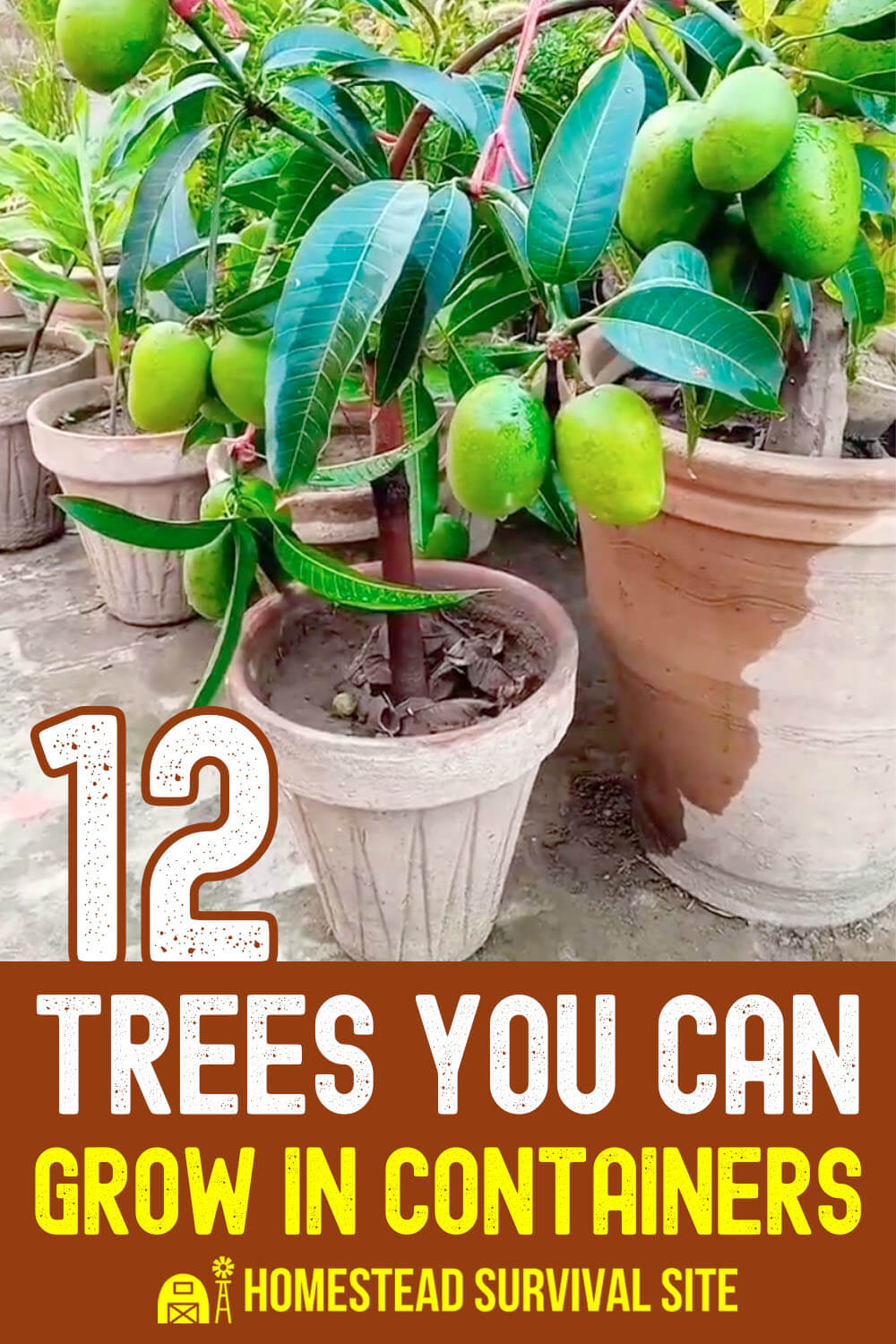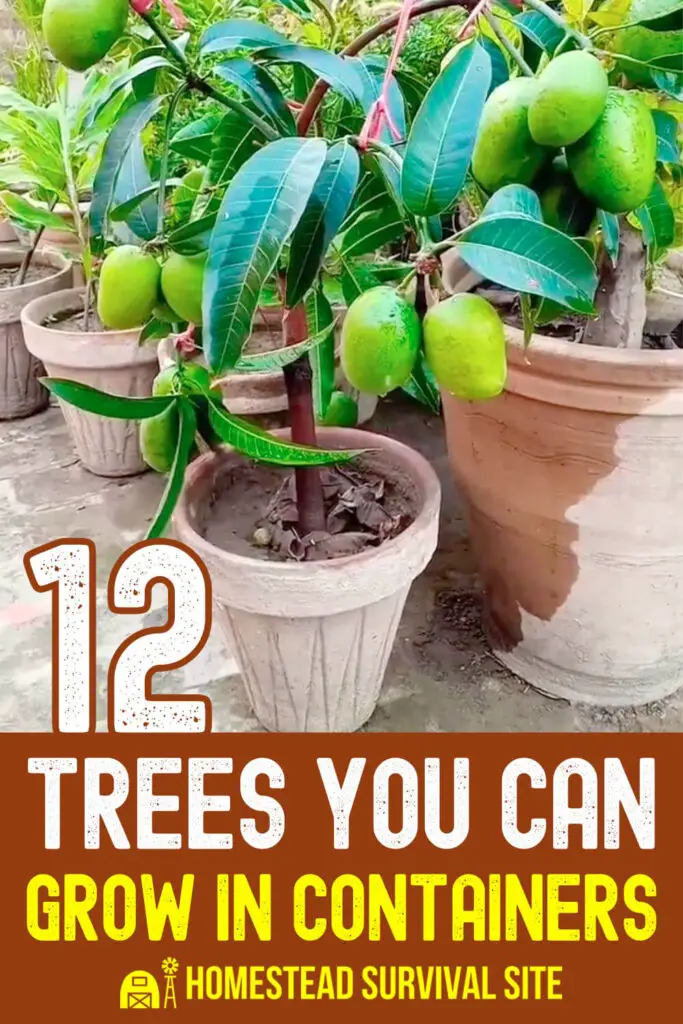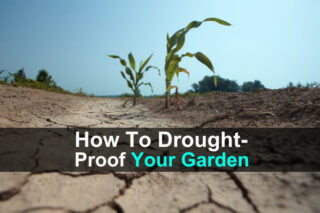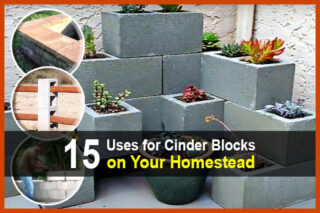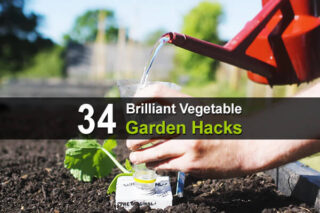Estimated reading time: 15 minutes
Some people are surprised to learn that a tree can grow in a pot or container, but there are many varieties that can not only survive but thrive in a container. The trick is to plant a dwarf variety and take special care with the size of the container, its soil, and other factors that affect the health of any plant such as sunlight, water, and feeding.
Better yet, a tree in a container is somewhat portable and can be moved around a yard or patio and even indoors to protect it from harsh heat or cold, or to simply allow you to grow a tree when your yard or garden space is limited.
Want to save this post for later? Click Here to Pin It On Pinterest!
Getting Started
Before we get into the various tree varieties you can grow in a container, there are some basic guidelines that will ensure your success. In many instances a dwarf tree variety can grow for 20 years or more in a container, but you have to do some things the right way.
The Container
Containers made from concrete, terra cotta or resins make the best substrates for growing trees. You could also use a half barrel. What they all have in common is relative weight. The addition of the soil plus the tree and the container will create a suitable amount of weight to keep the tree upright in the wind.
Many dwarf tree varieties are sold in plastic buckets and that’s where the weight problem becomes a limiting factor. Transplant any tree from the plastic bucket to your heavier container and you won’t have a problem with your tree blowing over in the wind.
Any container should also have drainage holes in the bottom, and a shallow dish or catch plate underneath especially if you are keeping it or taking it indoors at any time.
The Soil
The standard soil mix for a tree in a container is a combination of compost, sand and Perlite. The compost helps to feed the tree through the first season while the sand improves drainage and the Perlite helps aerate the soil and hold some moisture.
The proportions are usually 75% compost, 20% sand and 5% Perlite. This can vary depending on the tree variety, but as a general rule these percentages will work for most trees.
One other thing that always helps is a layer of mulch on top of the soil. This will help prevent evaporation which is always a challenge with any container garden. Leaf mulch, bark, wood chips or anything else you usually use for mulch will do.
Watering
Consistent watering is another critical success factor with any type of container gardening and is especially import with trees. Whenever the soil is dry in the container the tree should be watered until the soil is saturated. If in doubt, go ahead and water it because the sand and drainage holes will ensure that excess water drains out.
How often you water depends a lot on conditions. Outdoors presents the most challenges due to heat, long exposure to sunlight or even wind. Keep an eye on any potted tree and make sure it’s well watered.
One backup option is to add a small container at the bottom of the pot that will hold some excess water. The wicking action of the soil will allow the plant to draw up some emergency water if the heat or wind is excessive, or you miss watering on a regular basis. This can be especially helpful if you go on vacation or are out of town on business and no one is available to water your containers.
Feeding
A good mix of compost will go a long way towards feeding your container trees but over time the compost will become exhausted. There are two solutions. One is to add a layer of fresh compost to the top of the soil in spring, and to work it into the soil.
A second solution is to apply a dry or diluted fertilizer to the container every two weeks. This is especially important in the spring when the trees have most of their new growth. One other thing to keep in mind is that a strong blend of phosphorous is important for the continuing growth of any tree.
Pruning
There are few reasons to prune a tree in a container and this includes both the branches and the roots.
One of the obvious things to watch with the branches is when any lopsided growth occurs. If one side of the tree grows more than other sides it can cause it to tip in the wind even in a sturdy container.
Another reason to prune it is if a tree and container are indoors. Unless you want a jungle in your living room, regular pruning will make a container tree a nice indoor accent rather than a dominant element in the room.
Just be cautious about pruning in the spring. If you have a fruiting or flowering tree you may cut off emerging blossoms and lose any future fruits or flowers. You also may need to hand pollinate if your fruit or flowering tree is permanently indoors. Few of us have bees roaming around the house, but a Q-tip gently swiped across numerous blossoms should get the pollen around to ensure pollination.
Finally, you might need to prune the roots. This is a major project and would involve repotting the entire tree, possibly in a larger container. The good news is that some dwarf varieties will never need repotting or become root bound. The bad news is that there’s no guarantee especially with smaller trees that don’t fall into a strict “dwarf” variety.
If you do have to prune the roots, carefully remove the root ball and trim the root ball so it is half the size of the soil volume in the container, and then repot it in a clean pot with a new soil mix and water frequently for a couple of weeks.
The Best Tree Varieties for Containers
We’re going to cover a range of trees that you can grow in containers from citrus fruits to other fruits; flowering trees and even an evergreen. There are many more that you can find on Amazon with a search for dwarf tree varieties, or at your local garden center.
Just make sure to read the label attached to any tree to determine its mature height, size and variety. Just because it’s sold in a plastic pot doesn’t mean it’s suitable for continued growth in a container.
If you buy online, read the posting carefully. Sometimes the photos will show a mature plant and below it mentions that you will only receive seeds. Seeds can work but they will take time to germinate and require constant moisture in the container.
You may also receive a cutting that needs to be rooted or a small tree. Either way, any online order may require more time before reaching maturity so keep that in mind.
1. DWARF LEMON TREE
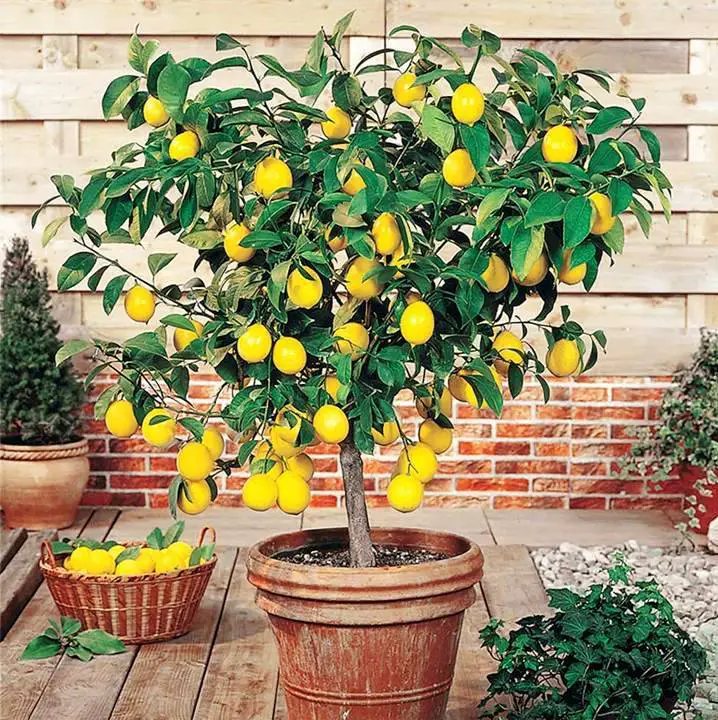
Dwarf lemon trees are the easiest trees to grow in containers. Just mindful that like all citrus trees, they are not tolerant of extremely cold weather. Move them indoors when the temperatures start to get into the 40’s. Below 20’s will kill the tree.
They can also be kept indoors year-round as long as they can receive some direct sunlight from a window with a southern exposure. They need at least 6-hours of sunlight everyday and require regular watering especially when fruiting. They also favor a citrus tree soil mix that you can buy.
2. DWARF OLIVE TREE

Some varieties of olive trees make excellent container trees. The best container olive trees are smaller varieties and many actually produce a crop of olives. When the tree is fruiting it’s best to water less than more. They are also not tolerant of cold temperatures and will need to be moved indoors in winter if you live in USDA zone 6 and lower.
Olive trees do not do well in soil with excess water so make sure you have good drainage and water only when the top 3-inches of soil is dry. They prefer at least 6 hours of sunlight a day. Their mature height varies depending on the variety so think about your location for your olive tree and double check the mature height.
3. JAPANESE RED MAPLE TREE
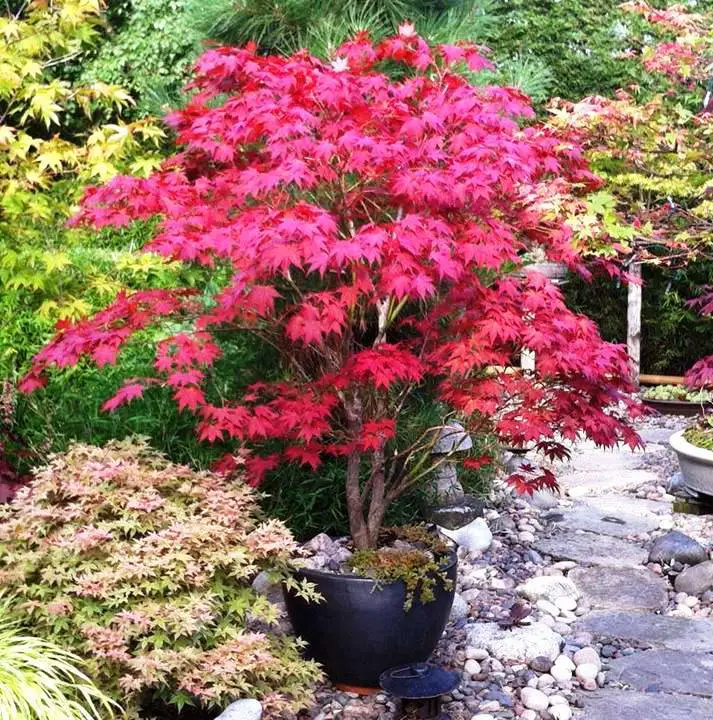
The Japanese Red Maple is a striking container tree with deep, red leaves year round. They mature at a height of about 6 to 8 feet. They are deciduous trees and will lose their leaves in the fall whether you keep them indoors or outdoors.
Some people have tried to cheat the deciduous cycle by artificially lighting the tree indoors. It’s the duration of daylight that triggers a deciduous tree to shed its leaves in Autumn, but even with additional artificial light the tree will start to shed leaves, but maybe a little later than usual.
4. DWARF BANANA TREE

Dwarf Banana trees make excellent indoor trees for containers and can also be kept outdoors during the summer. They are tropical trees and do not tolerate any kind of cold weather well. They also prefer lots of moisture both in the soil and as a spritz on their leaves.
They do in fact bear fruit but the bananas are the smaller, dwarf varieties. They prefer deep and wide pots about 24-inches across and deep. They take a couple of years to produce but can produce multiple crops in one season.
They grow 4 to 12 feet tall depending on the variety and are fast growing. They are also heavy feeders; require at least 6 hours of sunlight and need lots of water especially when fruiting.
5. CRAPE MYRTLE TREE
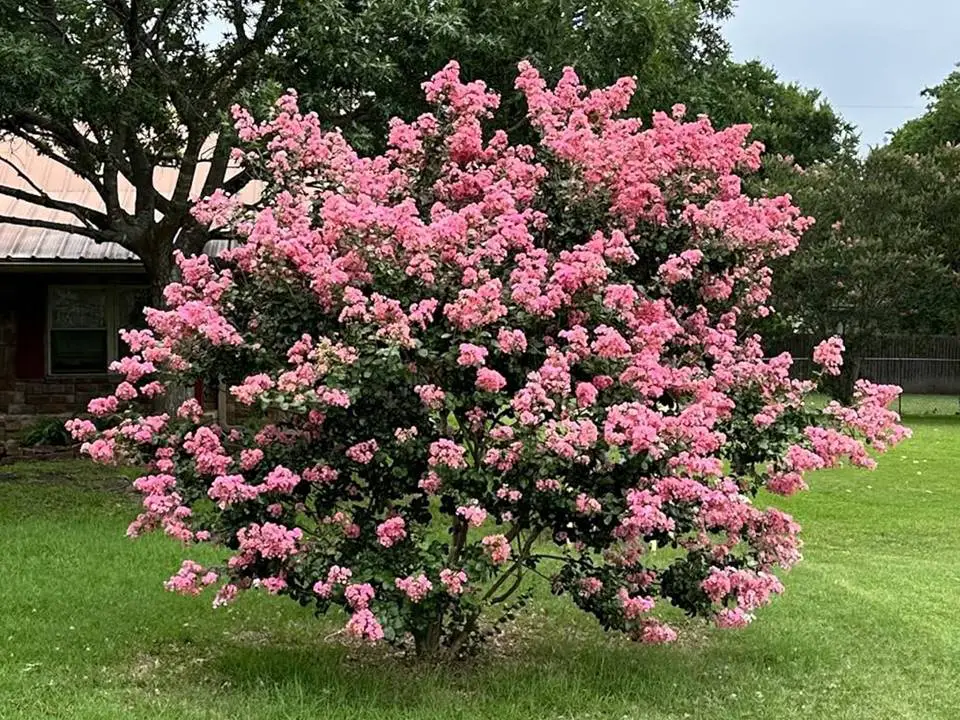
The Crape Myrtle tree is an ornamental tree known for its vivid range of flowers and colors. It is a tree that is popular in the south across USDA zones 7 through 9, but can be grown in northern latitudes if brought indoors in winter.
It prefers a loamy, well-drained soil and frequent watering. It also prefers a slightly acidic soil. It should be located in a sunny location with a minimum of 6 hours of sunlight or more. Watering is critical and its recommended that a porous clay pot not be used as a container.
6. DWARF YUZU ORANGE TREE
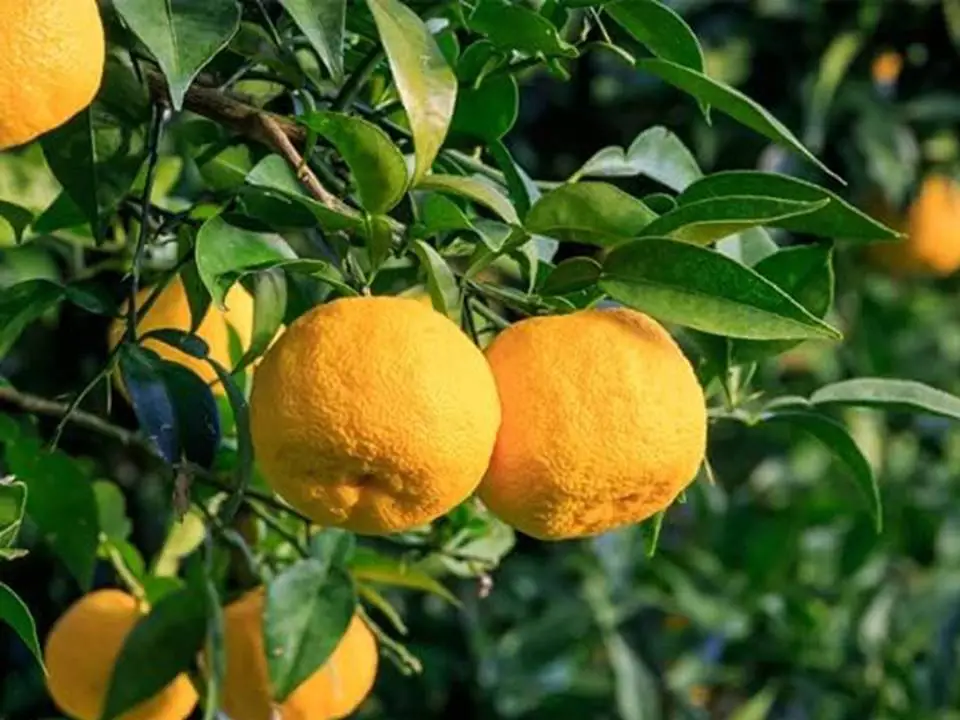
The Yuzu Orange tree grows no taller than 12 feet at maturity. It is a tropical tree that can be grown indoors, but can be placed outside in summer in zones lower than Zone 7. The fruits ripen in winter so for many it will be a welcome indoor harvest.
It is often identified as an easy to grow tree, prefers lots of sun but can survive in partial shade. It needs well-drained soil that is slightly acidic. Some people use a citrus tree potting soil and a specially blended citrus fertilizer.
7. DWARF MUGO PINE
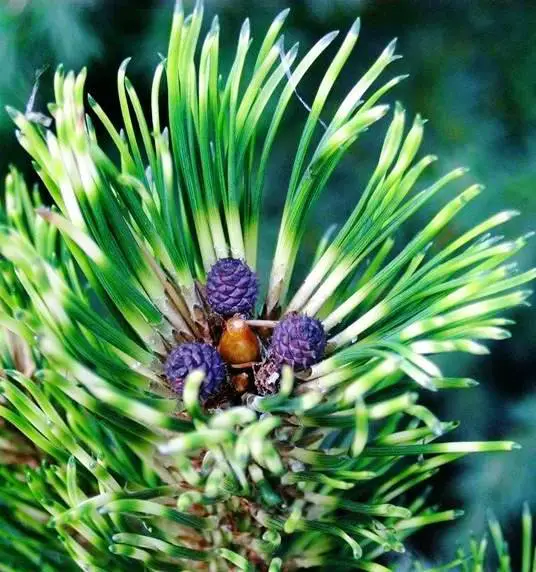
Many pines come in miniature forms including the Dwarf Mugo Pine. It can tolerate a range of soils and prefers cool, shady environments, however it can also tolerate full sun. Its roots grow close to the surface so be sure to mulch the top of the soil in the container. Mugo pines grow from 3 to 5 feet at maturity.
Mugo pines are moderately drought tolerant and prefer a well drained soil. The standard recommendation is to water them once a week. It can survive outside across seasons and rarely require any additional fertilizer, although new compost or a pellet fertilizer might be a good idea in the spring.
One thing to watch in a container is extreme cold. The roots can be affected by sub-zero temperatures so move them into a garage, shed or indoors if the winter weather becomes extreme.
8. DWARF STAR MAGNOLIA
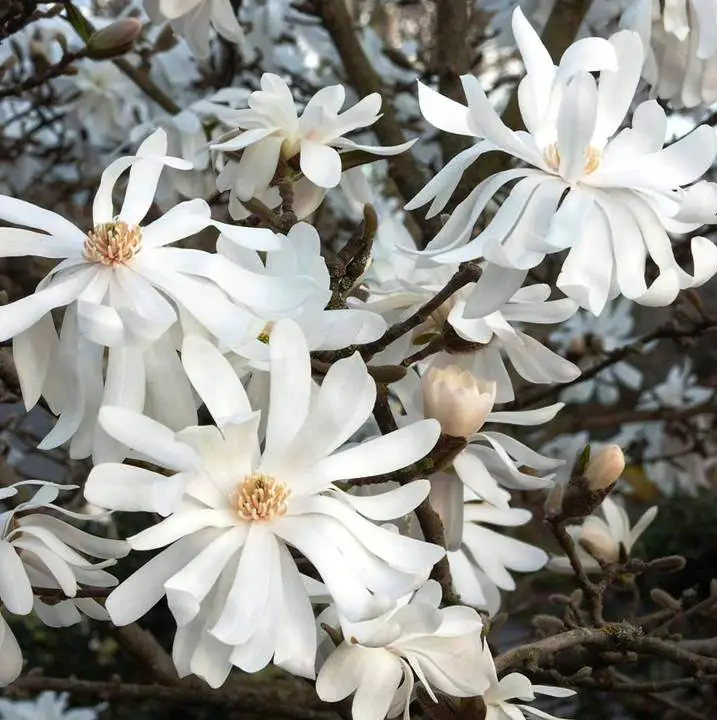
The Dwarf Star Magnolia is a beautiful ornamental tree and quite fragrant. It’s a great choice for indoor planting or on a patio or deck. It should be moved indoors in winter and prefers the soil mix we recommended earlier. Monthly feeding with a dry or diluted fertilizer is also recommended.
They grow up to 12 feet tall so keep them pruned if you’re limited on headroom. You’ll also want to prune them in to tree form or they will bush like a shrub. They prefer a damp soil so water them at least twice a week.
9. DWARF APPLE TREE
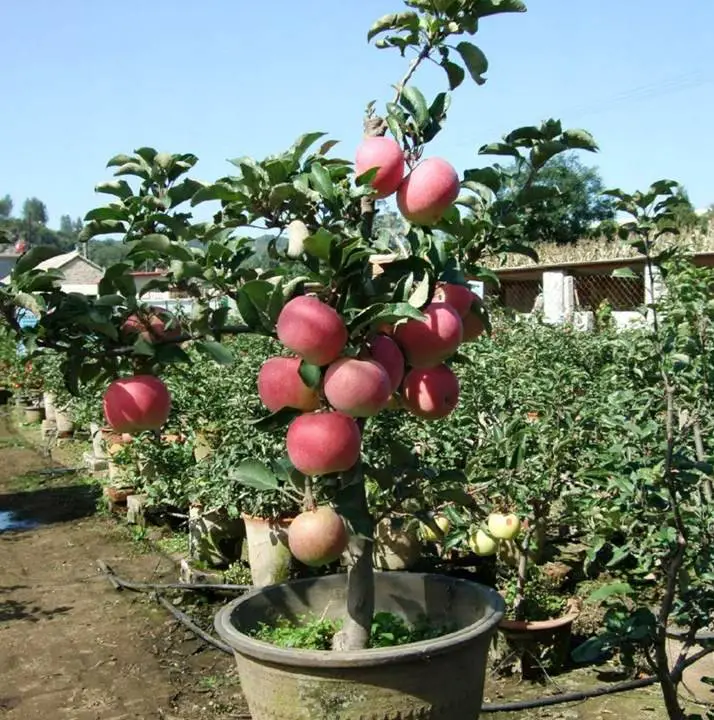
Dwarf Apple trees provide a surprising yield of average size apples. They prefer a normal potting soil like we’ve already recommended and prefer good drainage. Water 2 to 3 times a week and be especially mindful of watering when fruiting.
They prefer growing outdoors but can be brought inside in winter, although some people bring them into an unheated garage or basement over winter. They are deciduous trees so they will lose their leaves over winter indoors or out. At a minimum, place the container on the ground over winter rather than on a porch or deck.
10. DWARF BLUEBERRY
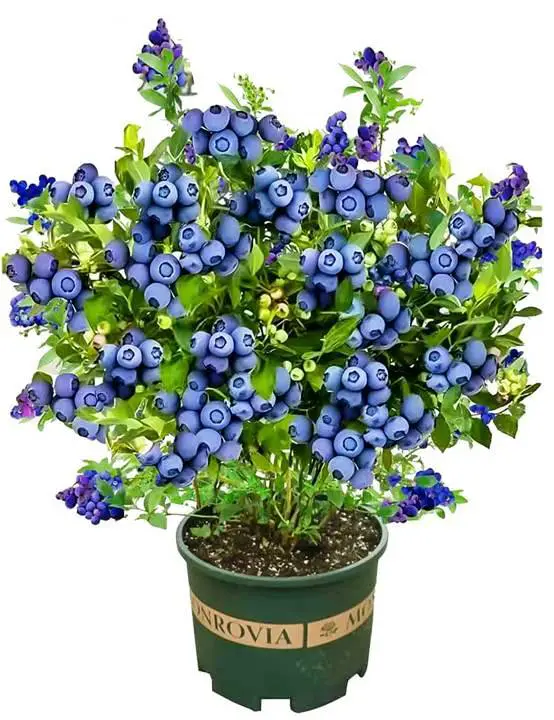
Okay, it’s not a tree but it wants to be. Most blueberry bushes don’t grow that large and the dwarf varieties can fit both indoors and out. You could easily grow them in a row on a deck or patio for good harvest year after year. They are low maintenance, like a moist soil but not too wet and refer at least 6 hours of sun per day, but can tolerate shade.
11. BONSAI TREES
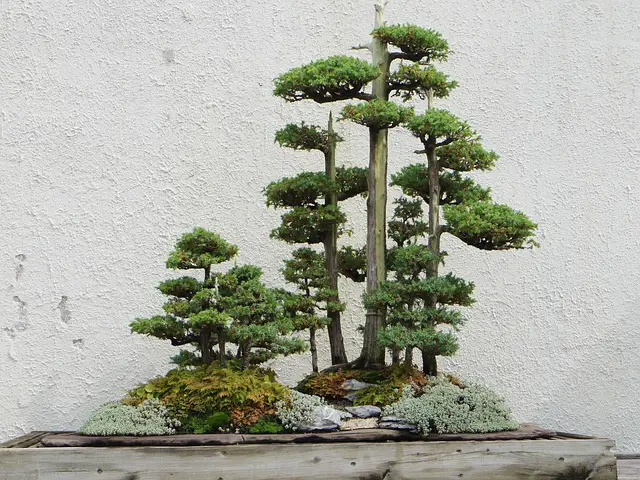
Bonsai trees are a uniquely Japanese invention. The trees are very compact varieties and many have been hybridized over centuries to grow in miniature. Special pots and tools are used to keep the trees pruned and trimmed and they require a rich fertilizer and rich watering. Most are grown indoors but can also be planted in the garden or displayed on a patio or deck.
12. DWARF TANGERINE
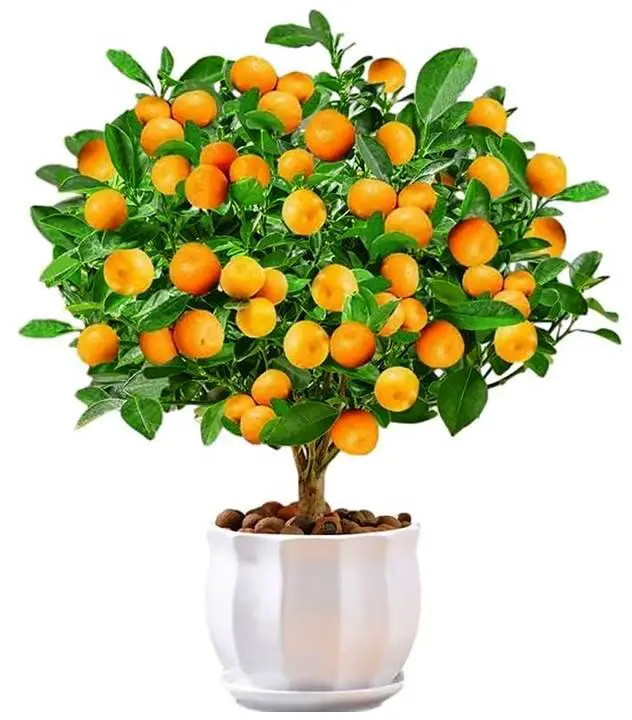
Many Tangerine trees are dwarf varieties. The Dwarf Tangerine prefers the standard soil mix we recommended but there are also those specialized citrus soils you can buy. The like deep watering as opposed to frequent shallow watering, especially when they are fruiting. They are best brought indoors when temperatures dip below 30 degrees and are not frost tolerant.
Patience
It takes time to grow a tree even in containers so be patient. A lot depends on how you start. Obviously a small potted plant will have a head start over a cutting or seed, but that all depends on your budget and ambition.
Over time you’ll have the satisfaction of watching your container orchard grow and your house will be graced with the beautiful accents and aroma of flowering and fruiting trees.
Additional Information About Growing Trees in Containers:
- Best trees to grow in pots
- 10 Trees To Grow in Containers
- Best trees to grow in pots – 15 compact varieties for year round interest
- Definitive Guide To Growing Trees In Pots & 20+ Best Potted Trees!
- Constrained by The City? Try Container Trees
- How to choose the right tree for successful container growing
- Five trees for pots
- 7 Best Trees To Grow in a Pot
Like this post? Don't Forget to Pin It On Pinterest!
You May Also Like:

